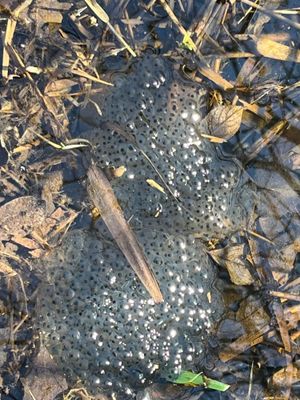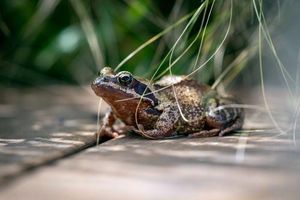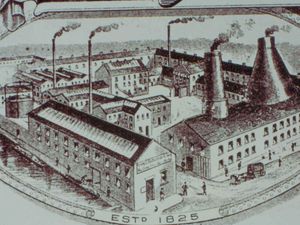Jelly good show! But enjoy frogspawn magic in its natural home, RSPCA says
RSPCA experts have appealed to children, parents and teachers to resist the temptation to take frog and toad spawn home to watch it grow into adult amphibians.
Watch more of our videos on ShotsTV.com
and on Freeview 262 or Freely 565
The charity wants people to instead enjoy one of nature’s most fascinating miracles in the ponds, puddles and ditches where it unfolds from early spring until April.
Previous generations of youngsters have collected the jelly-like masses with fishing nets and jam jars to witness its transformation into tadpoles then froglets or toadlets.
But wildlife specialists have outlined a raft of reasons why taking the embryos and larvae away from where they were spawned can harm them and other pond life.

Rebecca Machin, Scientific and Policy Officer in the RSPCA’s wildlife team, said moving them may disrupt amphibians’ lifecycles, and the nature they interact with.
Rebecca said: “It’s fantastic that people want to enjoy wonderful wildlife and the great outdoors. But there are a number of welfare issues linked to taking wild animals away from their natural environments. It’s really important for frogs and toads to be able to choose different food at each stage of their development. If they’re taken away from their natural environment, it’s very difficult to provide what they need as they metamorphose from tadpoles to froglets.
“In their natural environment, tadpoles, froglets and toadlets can take shelter when they choose, move to water of the right temperature, and can access land once they can no longer breathe in water for long periods. They also have shade for shelter from any predators that might be present, say in a garden pond. Amphibians can also be harmed by the chlorine in tap water in our homes.”
Adult frogs and toads prefer to breed where the environment suits tadpoles, froglets and toadlets, with natural water, diverse food, access to land, and shelter from heat, cold, and predators to help them reach adulthood.
If spawn or tadpoles are removed to an artificial environment like a fish tank, they may be exposed to unsuitable conditions like chlorinated tap water, excess heat or cold, or the wrong food.
They may also be in danger of drowning if they’re still in a tank and unable to clamber out when, as froglets or toadlets, they lose their gills.
Removing spawn and tadpoles to other ponds can also spread aquatic diseases, or invasive species like signal crayfish.
Rebecca added: “Another thing to consider is that they are part of a natural food chain, and by taking them out of ponds, you are removing quite an important food source for other wildlife.
“So it’s altering the ecosystem in a way which will have an impact on other animals.
“It’s much better to observe frogspawn and tadpoles in their natural environment.
“So if you see amphibians in a pond, visit regularly to witness this wonderful annual transformation in the wild.
“If you’re watching tadpoles developing in nature, you’ll notice other aquatic wildlife and see how it all interacts. It’s amazing to be able to watch and learn about other animals in their natural environments like this.”
Caroline Francoli of the RSPCA’s education team, added: “It’s great that so many children are compassionate and empathetic towards other creatures.
“But it’s important to help them understand why we don’t want to remove these animals from a home where they are happy and have everything they need, then take them somewhere different.
“Also, if we are trying to teach children about nature, then to do that with creatures in an artificial environment is not a true reflection of what happens anyway.
“So it is more beneficial and more fun for the kids if they go out and look at frogspawn and tadpoles in their natural environment.
“It’s also an ideal opportunity to get children out of the classroom.”
Watching the life cycle of frogs and toads in the wild is not the only spring activity for children. The RSPCA’s education website is full of ideas to help you engage with nature.
Why not create a hedgehog feeding station to help these prickly creatures rebuild their strength after coming out of hibernation? Simply, leave a bowl of special hedgehog food or dog or cat meat out, along with water, in a quiet, sheltered space in your garden.
Or make a drinking station for bees by filling a shallow bowl with water, then placing pebbles inside, so that the pollinators can stand on the stones safely, while rehydrating.
You can also build a ladybird home by stacking twigs, branches, logs, straw, pine cones and bits of old plant pots in a pile on a quiet spot in your garden. These pretty beetles will find it useful later in the year as they prepare to hibernate.
The RSPCA wants to build a better, kinder world for all animals and the charity’s website is packed with ideas for individuals, groups, families and classes, to connect emotionally with animals and learn how to improve their fortunes.






